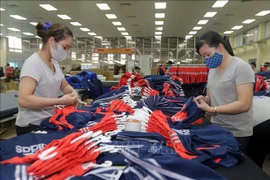Pham Van Viet, General Director of Viet Thang JeanCo., Ltd., said major importers like the US, Europe and Japan prefer supply-chainlinkage, which, however, remains weak in Vietnam.
Given this, the domestic garment-textile sectorshould make greater efforts and take solutions to integrate more intensivelyand extensively into the global supply chain, he stressed.
Building a sustainable supply chain requires along-term, well-designed strategy, Viet said, urging Vietnamese enterprises toadopt a long-term mindset in supply chain restructuring and repositionthemselves in the market.
Viet pointed out that the cut, make and trim (CMT)manufacturing generates low profits and causes price pressure, forcing firms toshift to the business of freight on board (FOB), original design manufacturer(ODM), or original brand manufacturer (OBM).
Without a long-term mindset and vision, domesticenterprises would not be able to integrate into the global supply chain more deeply, hecontinued.
To raise their self-reliance in material suppliesand reduce their dependence on imports, economist Vu Dinh Anh proposed theState perfect laws and policies on support industries, which, he said, shoulddirect the planning of support industry clusters to attract more foreigninvestments.
Trade counsellors should play a more active role inseeking and expanding import and export markets, and supporting businesses intechnological transfer, thus raising their competitiveness in the global valuechain, he said.
In another view, Viet suggested building a designcentre in Ho Chi Minh City which makes up more than 40% of the country’stotal garment-textile export revenue.
The centre will serve as a playground for designersand apparel enterprisers nationwide, he explained.
The Vietnam Textile and Apparel Association said itwill continue raising policy proposals to competent agencies to facilitate theoperation of domestic firms, while enhancing coordination with other domesticand foreign organisations in supporting them in terms of both technological andcapital./.




























